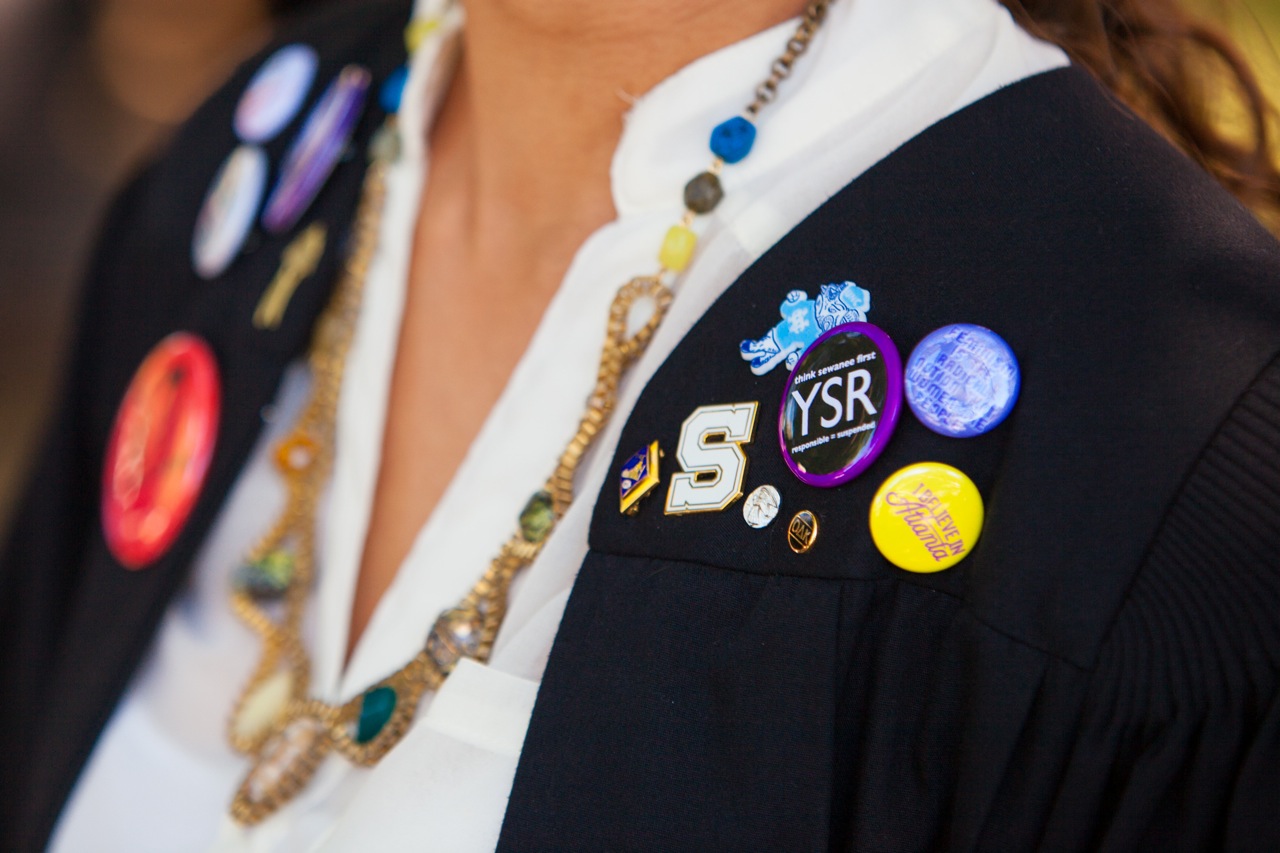By Mary Katherine Saye, C’23
As you look at the student profiles of the 2019–2020 entering class at the School of Theology, one profile jumps out—Sister Elizabeth Carrillo, T’21, a Catholic nun pursuing her master of arts degree in religion and environment. That might seem surprising, but as Carrillo explains, she saw it as an “ecumenical opportunity.”
Carrillo was baptized Catholic but was not raised in the faith. Because of her passion for music, she happened upon Gregorian chant later in life and was captivated by its beauty. She wanted to know where this tradition of music came from which led her to the Benedictines. From there, she learned about the Rule of St. Benedict for monastic life and found it attractive because it “wasn’t just a historical document but a way of living.”
During her freshman year of college at Boston University, she visited some communities that followed the Rule and was intrigued by the monastic life. She graduated with a degree in music and used this to teach violin in Prescott, Arizona. But the “questing” hadn’t left her, and she found herself in the summer of 1997 volunteering for the Live-in Volunteer Program at Mount St. Scholastica Monestary in Atchison, Kansas that lived using the Rule of St. Benedict. There the sharing in the beauty of the sung liturgy, the Divine Office, spoke to her.
In the fall of 1998, she went back and stayed for two years, sharing her musical talents with the community and developing new skill sets. She recalls being assigned to help the maintenance department and learning how to do things she never thought of doing such as sanding and mowing the lawn. This experience gave her valuable insight into being a part of a greater community in which the talents of an individual can be shared and they can acquire new knowledge of other skills.
In 2000, with the help of the Rite of Christian Initiation for Adults (RCIA), Carrillo was confirmed into the Catholic Church at the Easter vigil mass. She found that the monastic life which she had participated in for the past three years had helped her “embrace her Catholic heritage,” and the belonging she felt in the community is ultimately what led her to confidently begin her journey as a nun. After her confirmation, Carrillo moved to Kansas City, Missouri, to prepare for her life as a nun. She entered her newfound community in 2002 as a postulant.
As a Benedictine nun, she shares that prayer and community life are “central and people’s personal work flows from that.” St. Benedict’s famous phrase, “Ora et labora,” or “pray and work,” ring especially true for Carrillo who has molded her life around these two pillars. The Rule of St. Benedict outlines a life in which one surrenders their own will for the sake of God’s. Carrillo describes it as “short and simple,” yet seems dense in instruction upon first glance. She was attracted by its prologue which is a “call to the good life.” She was especially interested in its emphasis on stability or sacredness of place.
In addition to music, she had always carried a love for the natural world, and found that it fit into place with St. Benedict’s rule requiring one to take care of the place they’ve been given. When she was searching for a religious community to join, it was important to her to find a way of living that allowed her to bring together her desire for a contemplative life and love of the natural world. St. Benedict’s vow of stability challenges one to ask how they can care for creation and the land around them while reflecting upon its beauty with gratitude. This vow “keeps you grounded,” Carrillo jokes.
Before coming to Sewanee, Carrillo taught middle school earth and life science at Visitation Catholic School in Kansas City and most recently was a community liturgist. She also served on an environmental sustainability committee whose creation was inspired by the environmental and political activist, Wangari Maathai. It was there that she started searching for a graduate school in which she could bring together religious and natural environment studies and found that the School of Theology offered one of the few graduate degrees with that concentration. She was not deterred by the fact that Sewanee is an Episcopal institution; rather, she was impressed by Sewanee’s “faith filled community” and its monastic-like prayer life. The vast Domain and environmentally conscious environment made her feel at home away from her own community which boasts many of the same qualities.
With her degree from the School of Theology, Carrillo plans to use her newly gained knowledge to lead retreats that “focus on care for creation and incorporate monastic spirituality.” She aspires to be “well-versed in scientific facts but also be able to engage people on the heart level.” She has enjoyed taking classes in American environmental literature which has focused on essays by Emerson, Thoreau, Muir, and Leopold Aldo, and forestry, which has given her insight into what each person can do to care for the environment in simple ways. There is no question that she is excited to, as Folliott S. Pierpoint puts it, care “for the beauty of the earth.”
